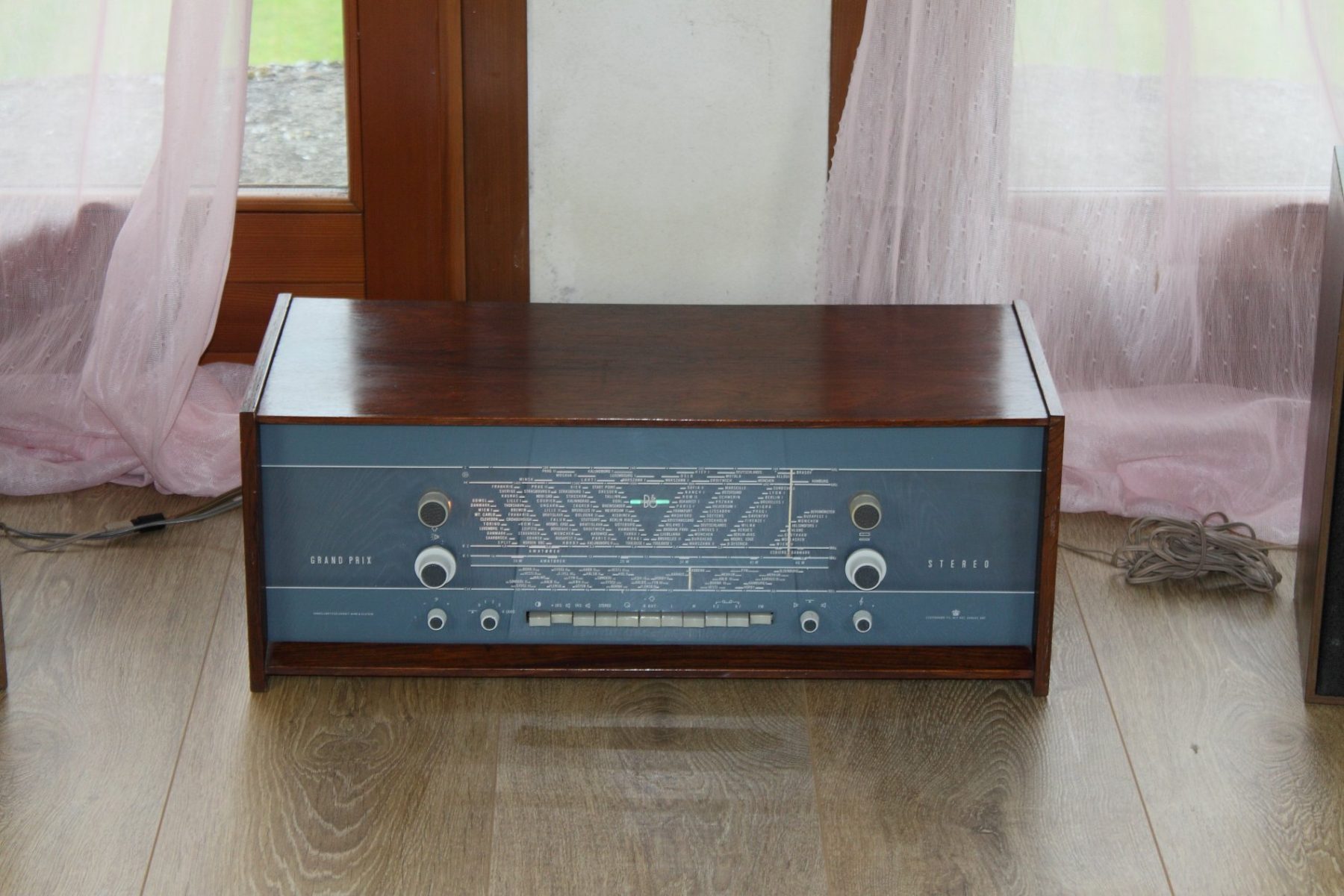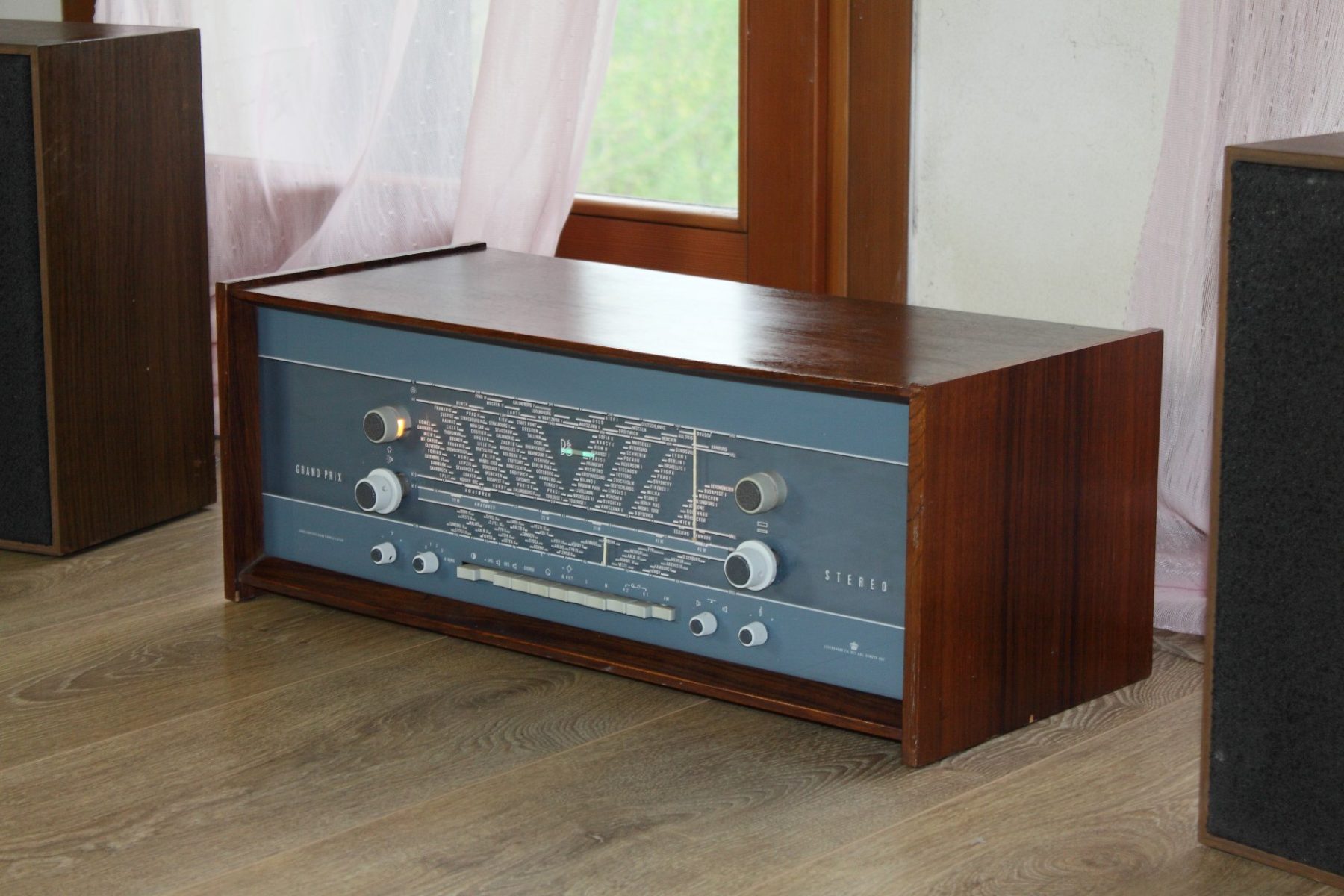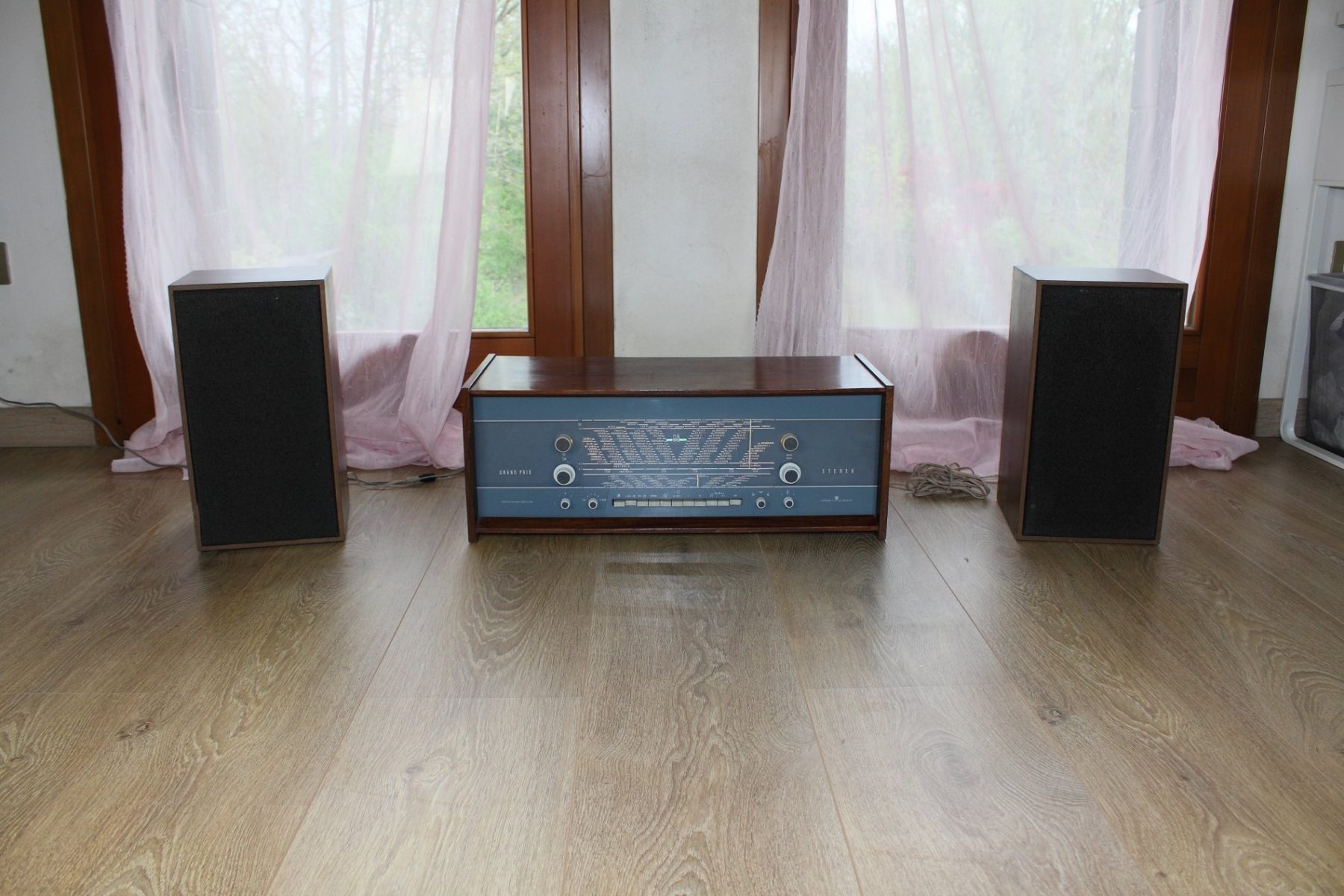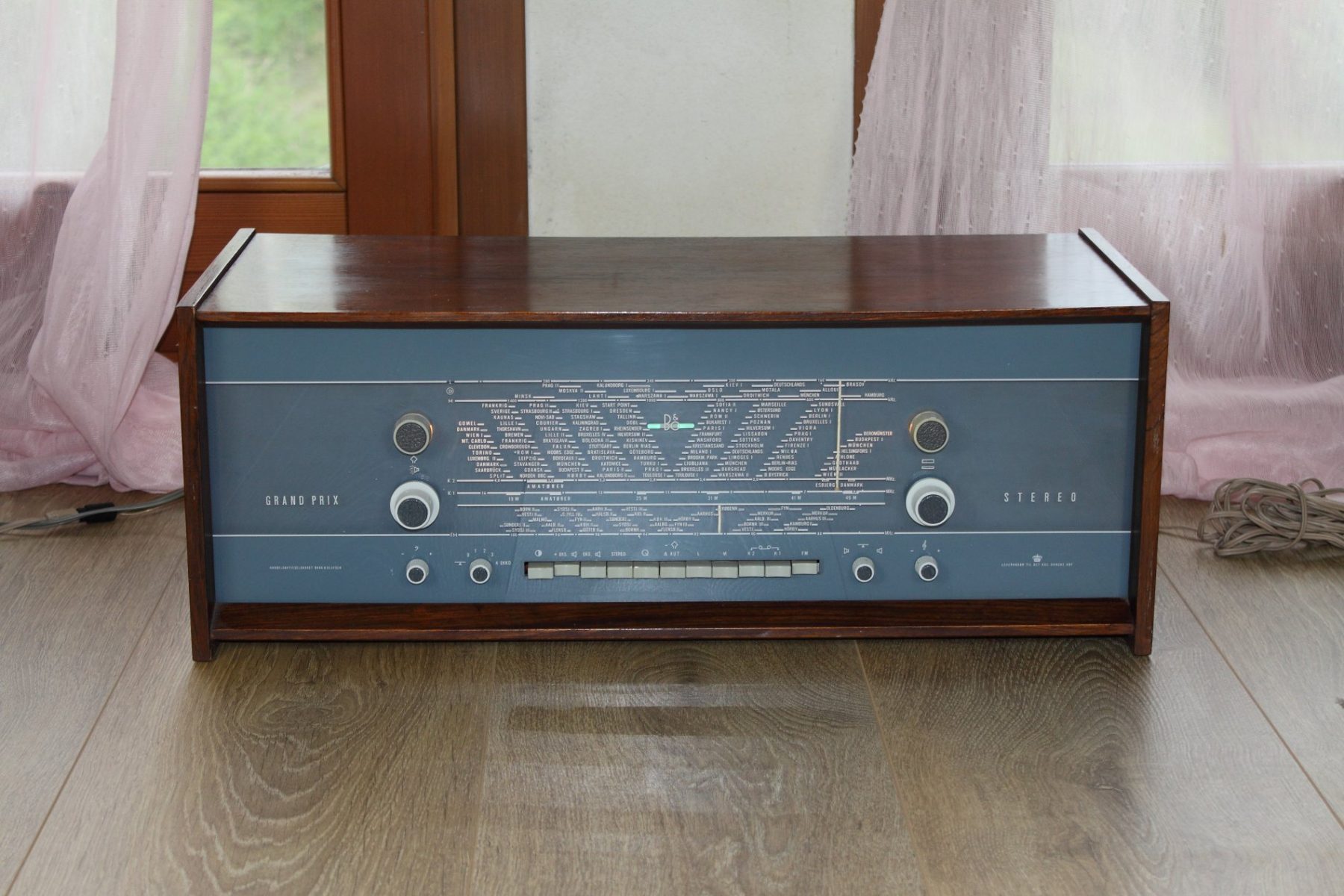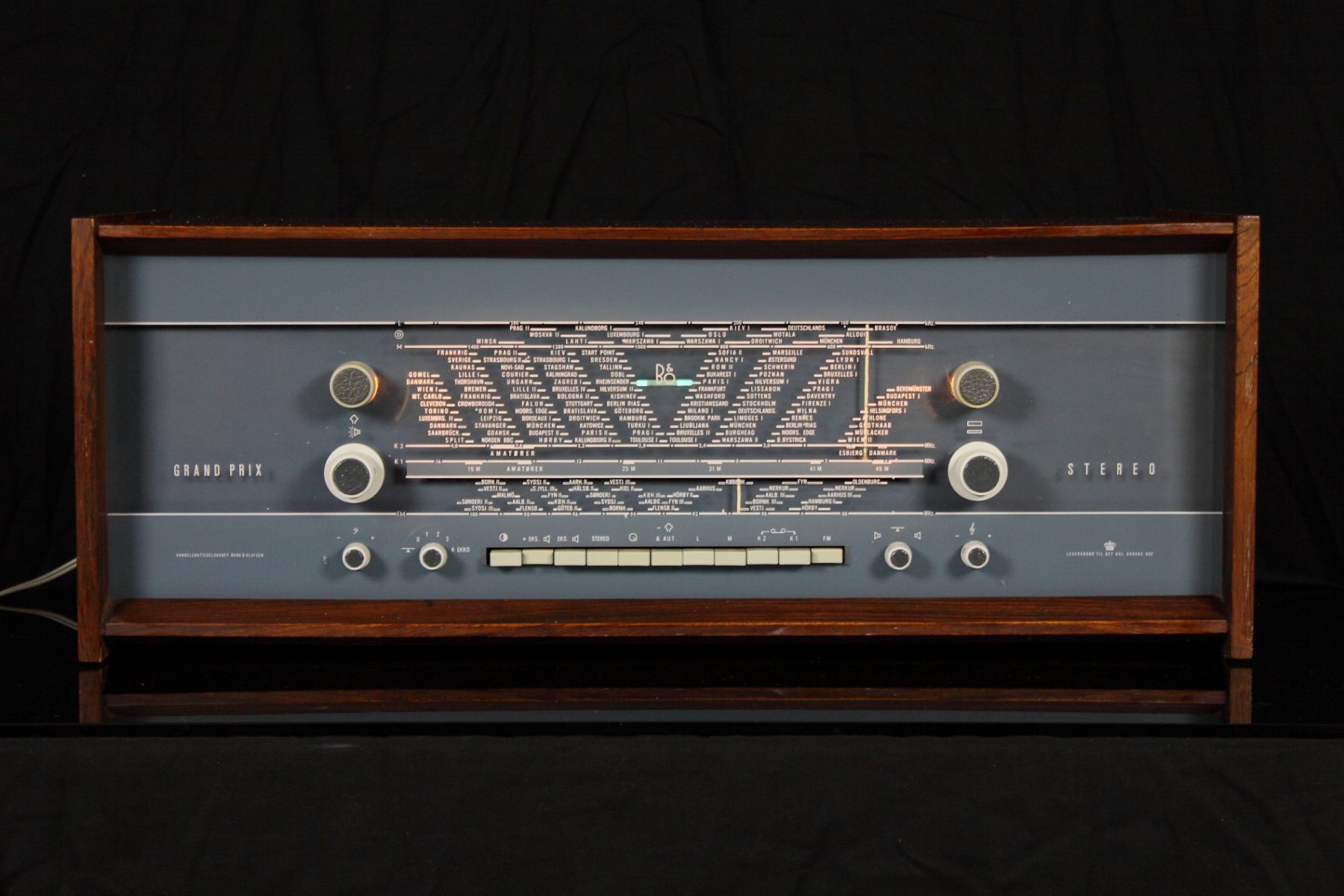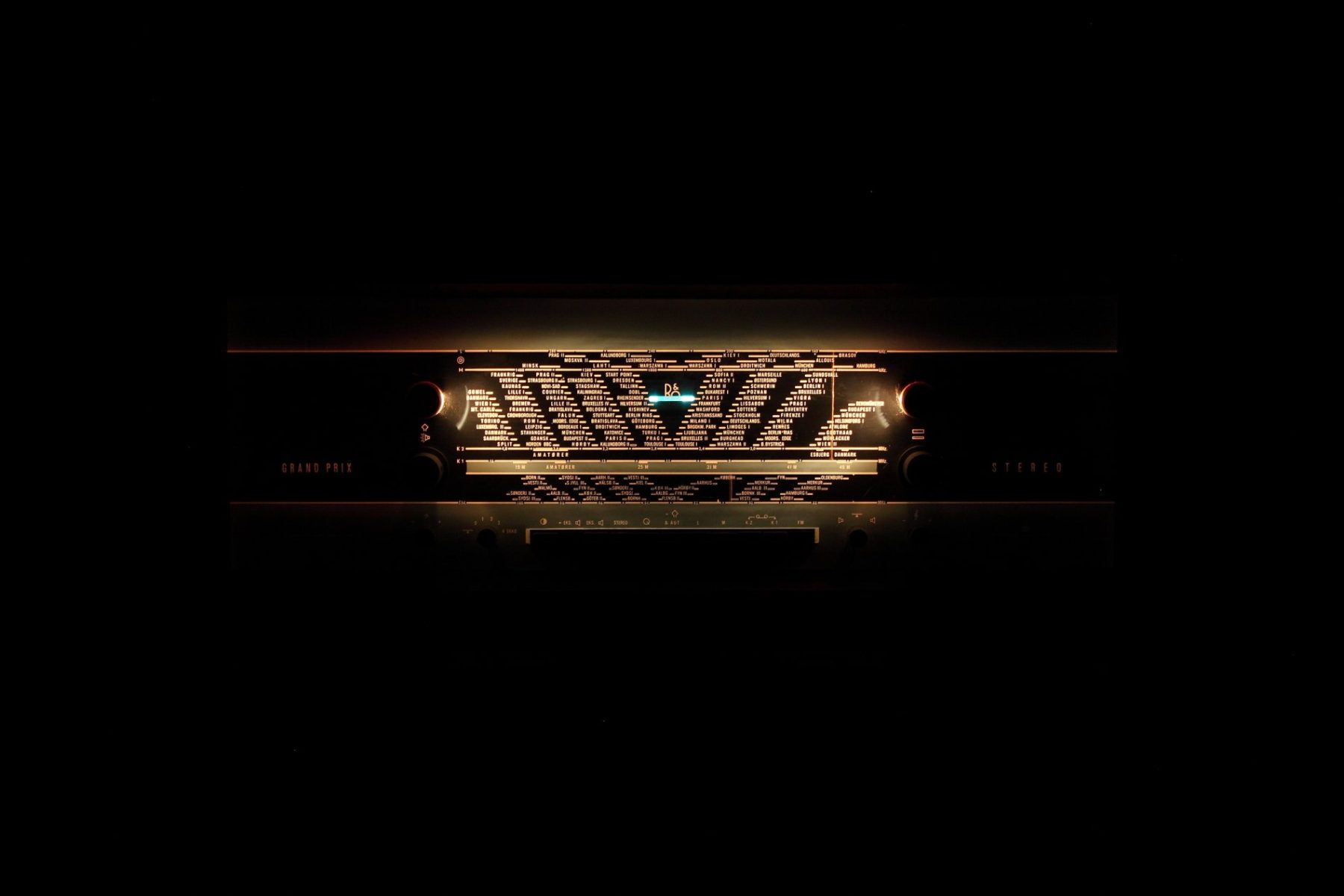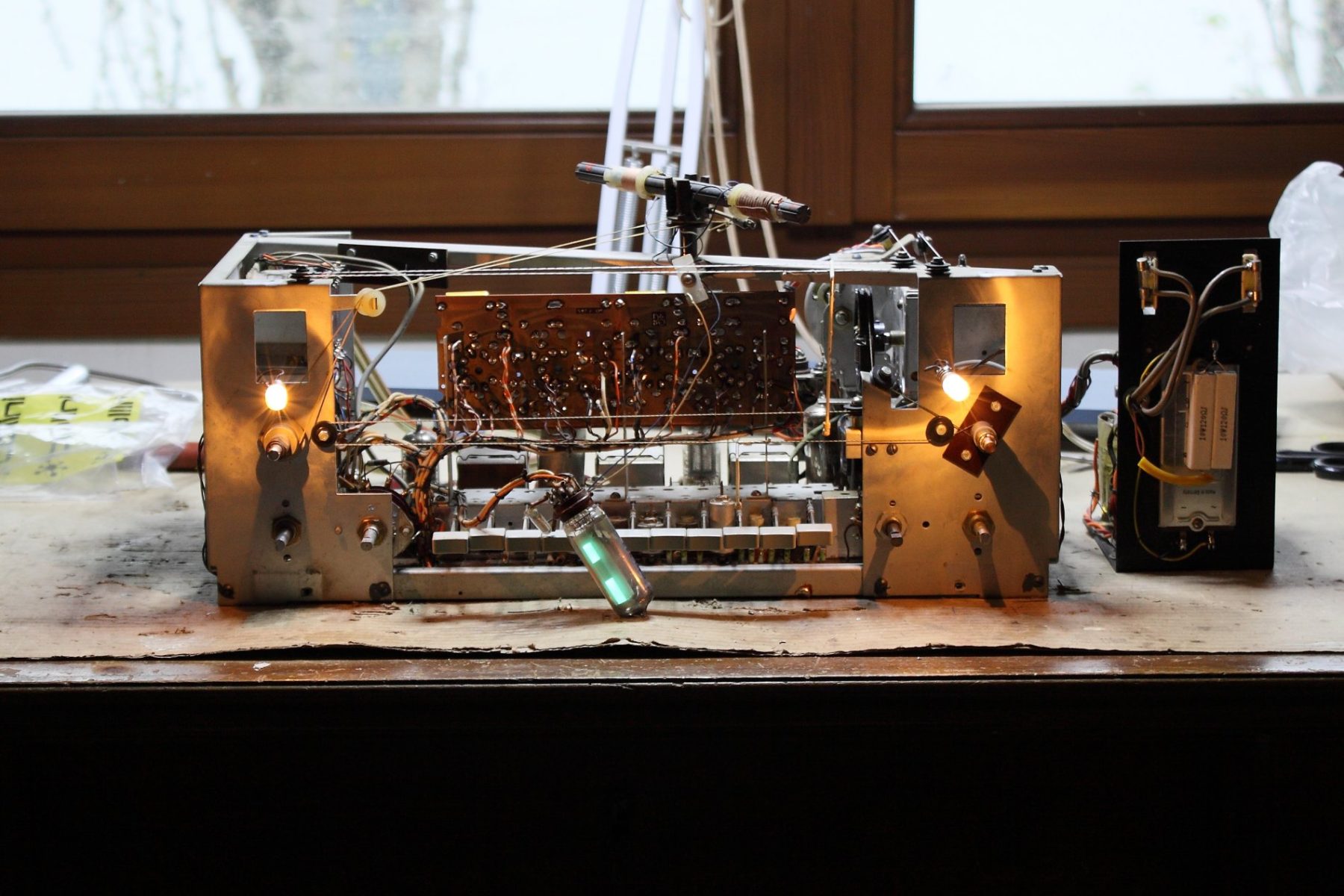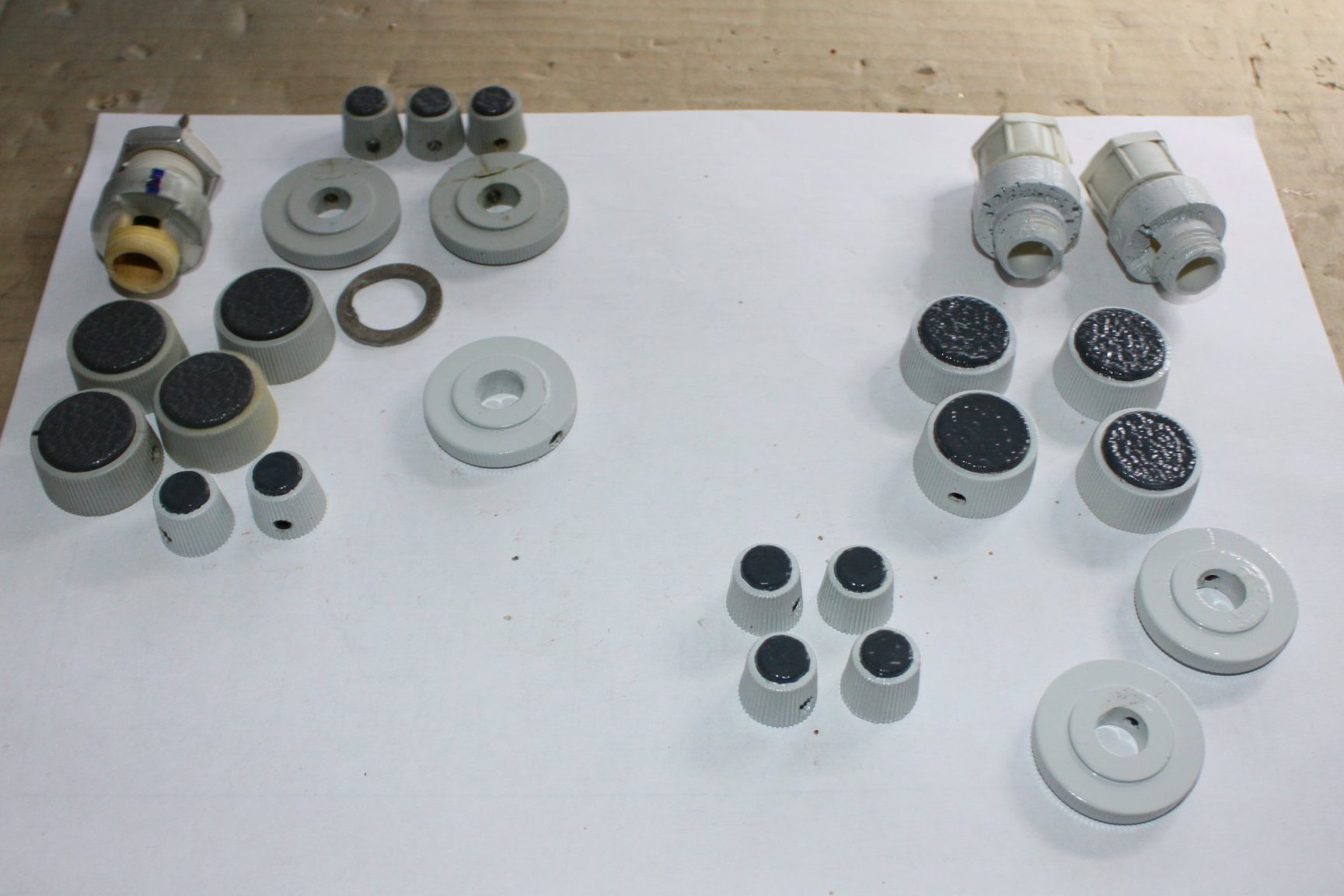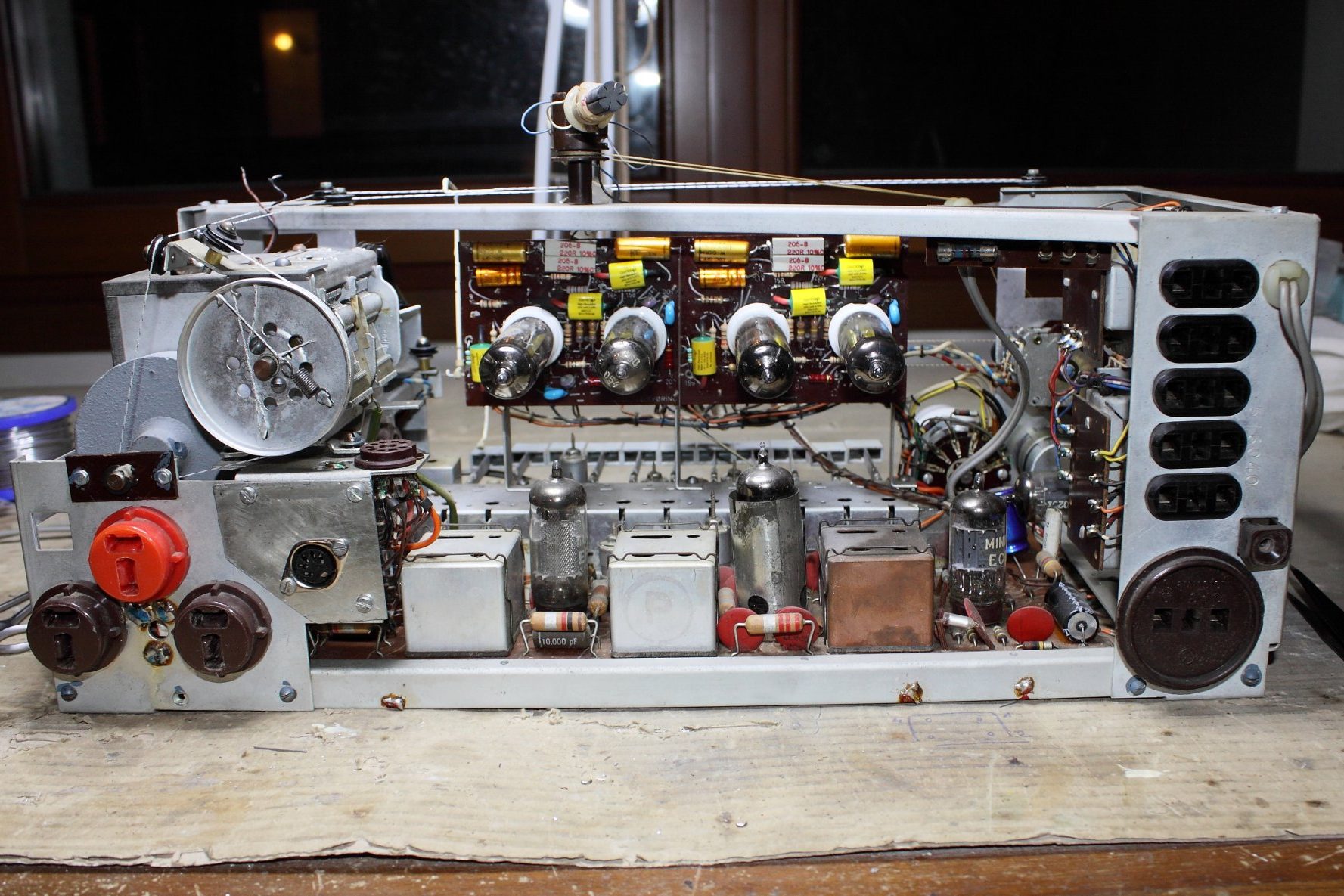 bang olufsen - en
bang olufsen - en
Bang & Olufsen – Grand Prix Moderne Stereo 608…
- 19th April 201926th May 2021
- by giovanni
Bang & Olufsen – Grand Prix Moderne Stereo 608
Bang & Olufsen - Grand Prix Moderne Stereo 608
The Grand Prix Moderne Stereo 608 is the first stereo receiver produced by Bang & Olufsen.
From this derives its great historical and economic value.
Produced in 1961, it represents not only an evolution, but a real epochal changeover in the design of the Danish brand.
In the inside, the execution is exemplary. The cables are well arranged and wrapped in a ligature with waxed string that collects them in a single, very solid body.
The power supply consists of an independent block, separate and far from the amplifiers.
The AM / FM radio section is equipped with a medium-frequency double stage to improve the selectivity of the device.
A section of a ECC83 double triode is used to compensate for the attenuation introduced by the Baxandall tone control section.
Very few radios, even among high-class models, were equipped with a Baxandall circuit for tone control. The builders almost always preferred simpler and cheaper circuits, even if the circuit response were not completely symmetrical.
The two amplifiers, one for each channel, are made of a couple of ECL86s. For a total of four ECL86s.
All are mounted on their own vertical board so that the final valves, the four final valves, are arranged horizontally in order to better dissipate the heat. In this way, in fact, the tubes cool uniformly throughout their length.
The triode sections of the ECL86 ensure phase inversion while the pentode sections are connected in Push-Pull and constitute the outuput amplifier.
The power supplied is approximately 10W per channel.
Everything about this device was based on the search for quality. On the other hand, the B&O was proud to be the official supplier of the Danish royal house.
The restoration of this device was thorough.
The amplifier stages have been completely renewed. Each component has been replaced with a high quality correspondent or audiophile.
All the old carbon composite resistors have been replaced, with 10% tolerance but almost all altered and very noisy.
The excellent but unfortunately aged Mustard condensers have all been replaced with Auricap audiophile.
All electrolytics have been replaced with components capable of withstanding high temperatures.
The original bakelite socket of the tubes have been replaced with new high-quality ceramic sockets and high-quality gold contacts.
The valves have been selected all with equivalent characteristics, so as to avoid imbalances between one channel and another.
The results of this excellent project and of the very high quality of the components used in the process are the extreme definition and the sweetness of reproduction.
I believe the Grand Prix Moderne Stereo 608 is especially suitable for recordings with voices or solo instruments.
New Age and electronic music is reproduced with great satisfaction.
The fact that this warm and precise sound is played by a fascinating and rare machine from the 60s just complements the invaluable magic.
The sweetness this machine impresses me with makes me think that it might be possible to use it in music therapy or sound baths. Although for this purpose the use of live instruments is unsurpassed.
But this is a complex and controversial topic and it will be the subject of in-depth studies and discussions in the future.
The first track of the playlist I chose in order to test this device is Sit tecum timor suus, from Giacomo Carissimi's Historia di Job (Marino 1605 - Rome 1674).
It belongs to the musical genre called Oratorio, and in particular of the Oratorio in Latin and with a biblical subject, of which Carissimi is one of the greatest exponents.
This musical genre has very ancient origins, as it comes from Passions and Mottetti. This is very interesting, because being detached from the liturgical function it exalted the practice of music for the purpose of spiritual elevation. Music as an instrument of diffusion of elevated principles was strongly pursued by Filippo Neri who, similarly to the Lutheran rite, intended to bring the evangelical message closer to the people.
Going back to Carissimi, chapel master in the Basilica of Assisi and then choirmaster in the Germanic College of St. Ignatius of Loyola in Rome, in the Historia he uses both monody and polyphony, emphasizing, according to some critics, the expressive power of the work. From the manuscripts it appears clear that the instrumental element is the pipe organ, rarely accompanied by bowed or wind instruments.
After Carissimi, the Latin Oratorio will lose importance while the vulgar Oratorio will continue to be practiced.
In Naples, Alessandro Scarlatti writes La Vergine Addolorata, a mature work with alternating refrains, arias and instruments that accompany the recitative. This use of the orchestra brings the work closer to the genre of drama. The second track of the playlist is drawn from this wonderful Oratorio.
In Venice the Oratory, clashing with the profane melodrama prevailing at the time, is expressed in the works of Giovanni Legrenzi, Baldassare Galuppi and Benedetto Marcello, up to Juditha triumphans by Antonio Vivaldi, which will be discussed in a future review.


La pazienza di Giobbe - Sebastiano Ricci - Museo Civico di Belluno
BLUETOOTH
Bluetooth receiver embed
MULTI PLATFORM CONNECTION
Each radio is equipped with a cable for connection to any digital device.
TUBESOUND IMPROVEMENT
- Bluetooth receiver embed - The unit is equipped with a BLUETOOTH receiver powered directly by the receiver power supply. This makes it possible to control the amplifier from any external digital device as an IPAD, a Smartphone, or a sophisticated multimedia station. So you can hear your preferred web station or your lossesless file without cables on the room. Wireless Receiver can be equipped upon requests.
- Multi Platform Connection - A customized adaptation cable to connect any digital device as Iphone, Smartphone, Laptop, CD Player etc. will be provided with this radio. This special cable suits the different impedances between the modern equipment and the receiver. Furthermore the two stereo channels flow into one without increasing the load to the input unit.


HISTORY
1925 - Two Danish engineers, Svend Olufsen and Peter Bang, start the production of radio equipment in the attic of the Olufsen family, in Struer.
1927 - The first device, called the “Eliminator” (as it allowed to eliminate the battery power and to connect the device directly to the power grid), is commercialized.
A production plant is built in Struer.
1929 - The "Five Lamper" model (five valves) is marketed and is a great success.
1938 - The beautiful Master 40 model arrives, which allows to memorize stations from the keyboard.
1939 - Beolit 39 is launched, the first radio with a bakelite cabinet. From this moment on, the prefix “Beo” will be used for the most prestigious products of the brand.
1941 - During the German occupation, B&O puts on the market the Grand Prix 42CH which has the characteristic of having a tambour door that covers the scala parlante when it is not used.
1945 - The B&O factory is completely destroyed.
1948 - After a rapid reconstruction of the factory, the production of the Grand Prix 48 CH mobile radio is started, the first high-fidelity radio of the Danish company.
60's - A revolution at B&O. The designer Ib Fabiensen designs the new line of devices, Hi-Fi Stereo Amplifier 608, Grand Prix 608 Moderne, Dirigent 609. Also the Beogram 42 turntable is commercialized. It is with these models that the legendary design of B&O devices begins.
70's - In the 60s and 70s, the devices that make B&O famous in the world are produced. The Beomaster 1200 and 3000, the Beogram 1200 and the Beogram 4002, the beautiful giradischi tangenziale. The devices are designed by Jacob Jensen.
80's - The evolution of design continues with the different Beocenter units and the Beogram cd players.
90's - The company decides to market its products through a network of its own exclusive stores. It expands its interests with the production of mobile phones and Mp3 players.
2008 – It suffers considerable losses and a staff reduction and in the following years it returns to devote itself exclusively to the production of High Fidelity devices.
2015 - B&O becomes a partner of HP.

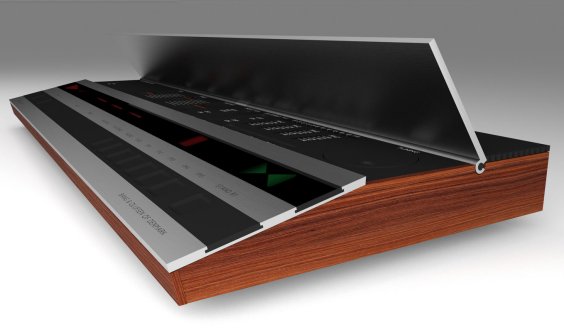
MAIN FEATURES
Year of production: 1961
Superheterodyne IF: 468/10700
9 AM Circuits
13 FM Circuits
Wavebands:
Medium Waves, Long Waves, 2 x Short waves, FM
Loudspeakers
Banana Plugs for External loudspeakers
Dimensions (LHD): 635 x 240 x 275 mm / 25 x 9.4 x 10.8 inch
Net weight: 12 kg / 26 lb 6.9 oz
Tubes 11:
ECC85 ECH81 EF89 EBF89 EM84a 2 x ECC83 4 x ECL86
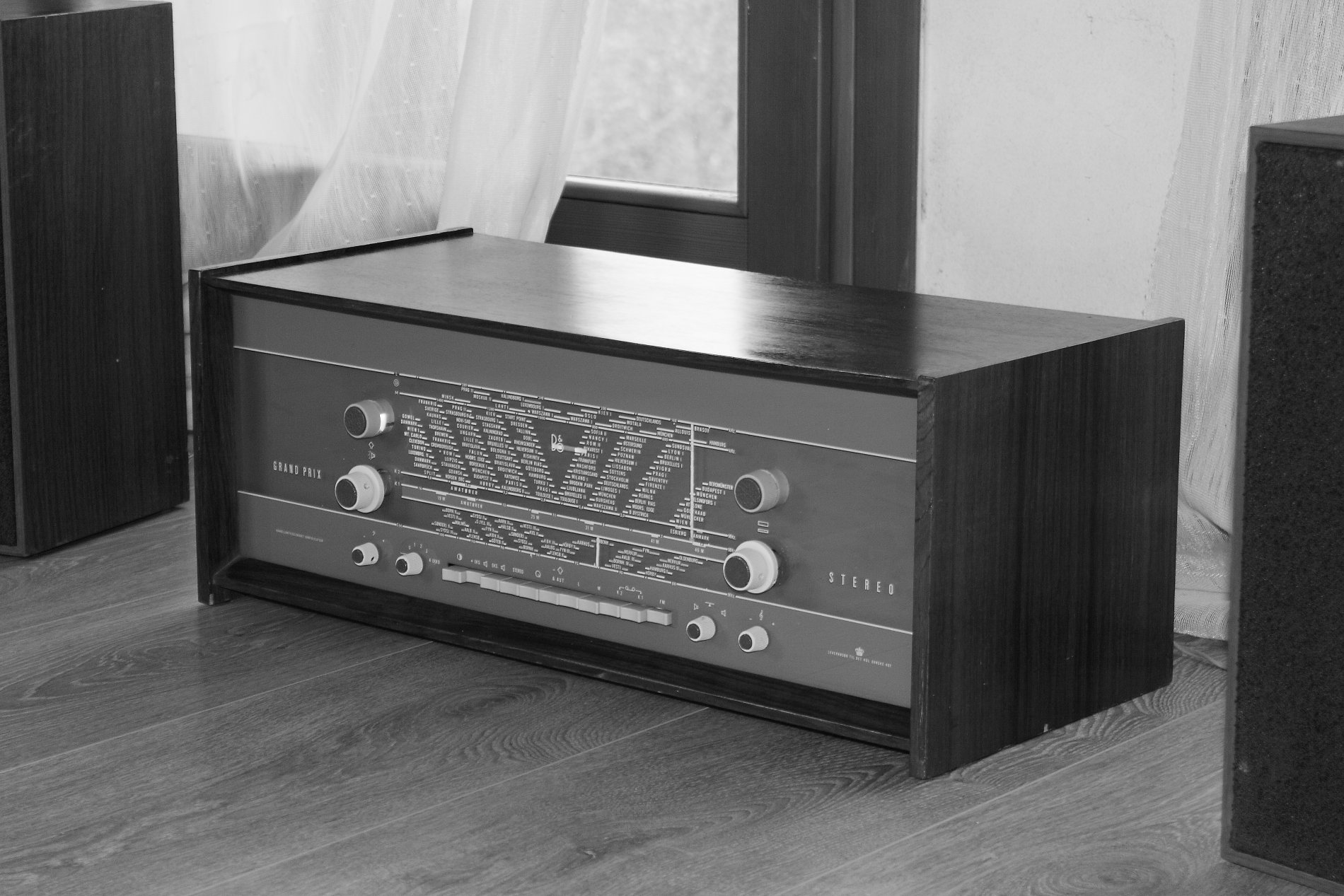
AERIALS
Inside the cabinet there is a dipole for FM reception and a ferrite rotating aerial for AM reception.
Ferrite aerial can be rotated from the outside to achieve a perfect tuning of the device in the AM.
In this picture see the rotation mechanism and the position indicator of the aerial.
The reception sensitivity with internal aerials is very good. This unit was in fact produced in a period when there were not many radio stations and those available fairly apart from each others.
Using an external aerial sensitivity is further increased.


SEPARATE CONTROL TUNING BETWEEN AM AND FM
The unit is equipped with mechanisms that control separately the AM band tuning and the FM band.
The tuning knobs are coaxial.
The largest crown controls the FM band.
The frontal knob, smaller, controls the AM bands (short, medium and long waves).
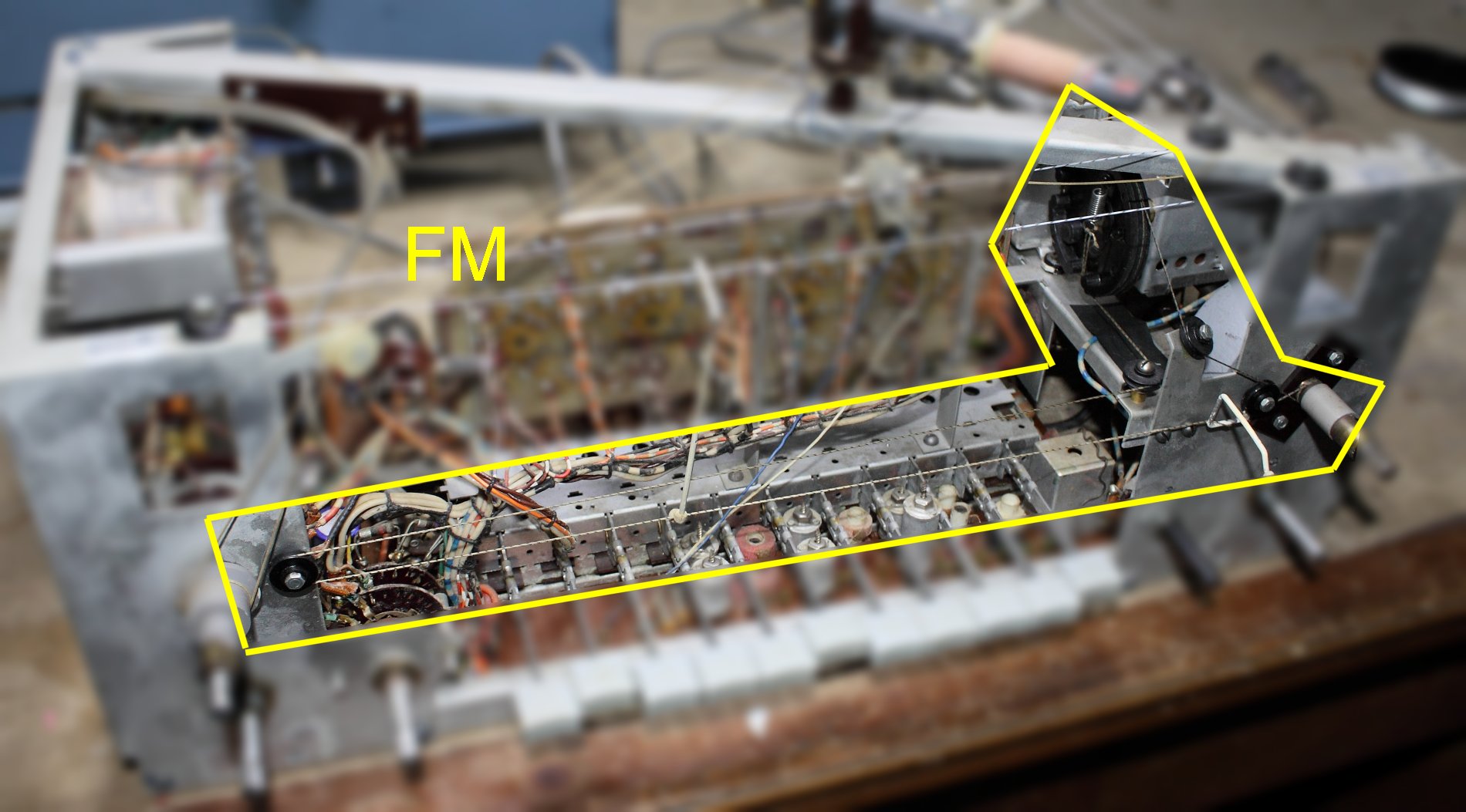
TUNING INDICATOR
The magic eye has of course been replaced.


LOUDSPEAKERS
This stadio amplificatore is gifted with noticeable transparency and detail.
The coupling with high-efficiency loudspeakers with neutral tone is therefore very suitable to enjoy these peculiarities to the fullest.
The loudspeakers must be connected with banana plugs on the outputs, respectively:
Højre - Right channel
Venstre - Left channel
The Bang & Olufsen loudspeakers, designed to be coupled to the Grand Prix Moderne Stereo 608, were the Type S (left) and Type L (right) models.
The recordings I posted on this page were made with Grundig 306A loudspeakers. I chose these loudspeakers for their detail and for the very deep bass they can express.

CONTROL PANEL
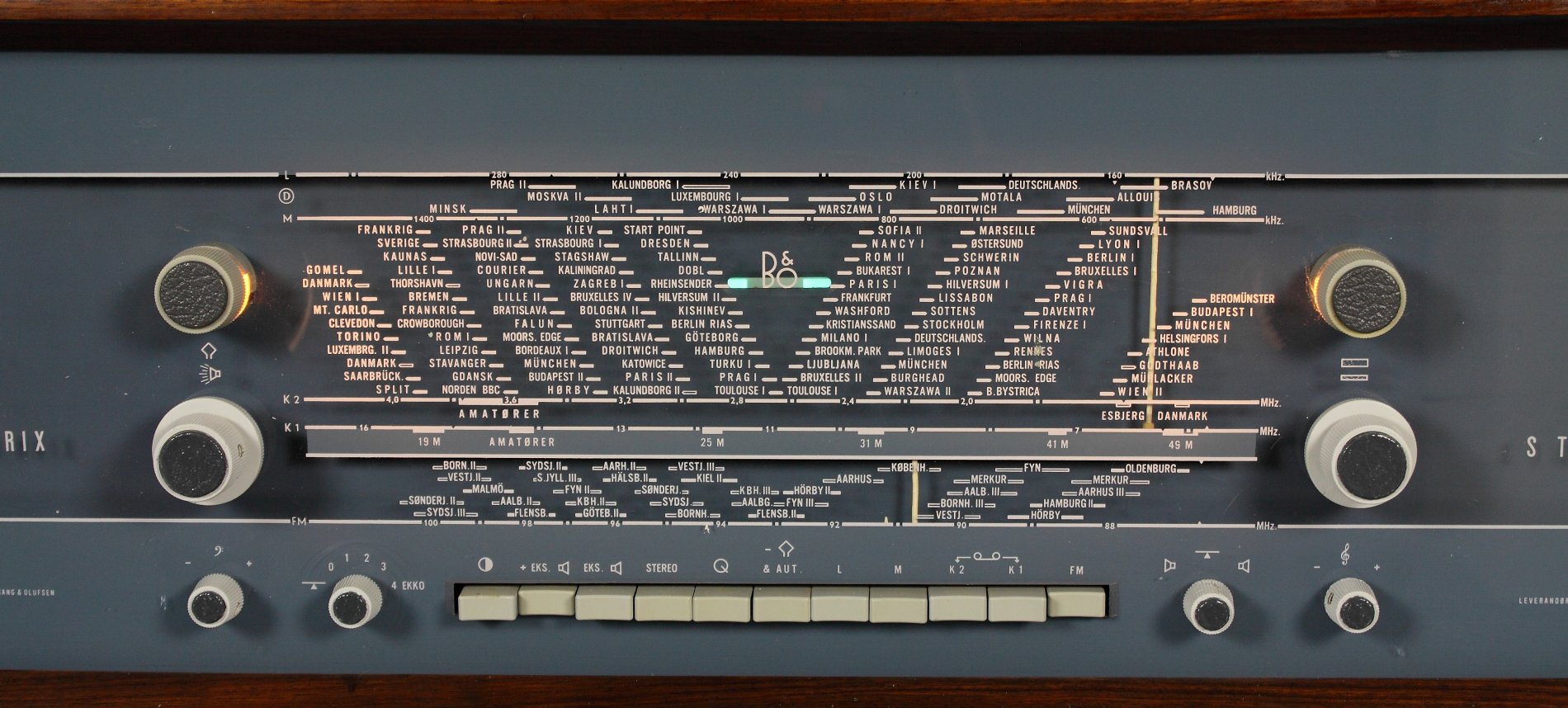
The front side can be imagined as divided into two horizontal sections.
In the upper part, the first knob is that of the volume with built-in loudness.
Coaxially, the ferrite antenna control knob can be seen.
Then, we see the AM scale for short, medium and long waves. The FM scale.
In the center we find the Magic Eye, which indicates the best tuneing of the different stations.
On the right of the dialglass, then, we see the two separate tuning controls.
The rear knob, bigger, controls the FM band.
The frontal knob, smaller, controls the AM bands.
In the lower section we find in the order:
BAS - Bass Control
Loudspeakers Selection knob with the following functions:
- Reverse of DX / SX channels
- Normal
- 4 progressive volume levels of additional loudspeakers
AFBR - ON / OFF
+ EKTRA - Insertion of additional loudspeakers
EKSTRA - Insertion of main loudspeakers
STEREO - Stereo / Mono
GR - Turntable (Pressing together GR and LB the TAPE input is selected)
FERRIT OG / INDTR AFBR - Ferrite Antenna (AM) / Automatic Frequency Control (FM)
LB - Long Waves
MB - Medium Waves
KB2 – Short Waves 2
KB1 – Short waves 1
KB1 + KB2 - Recorder
FM - FM
BALANCE - Right and left channel balance
DISKANT - Treble

REAR SIDE
Antenna Input:
- (Sx brown socket) Antenna for AM and Ground pin
- (Red socket) FM Antenna
- (Dx brown socket) Antenna for AM and FM both and Ground pin
Tape Recorder Input (Beocord).
External loudspeakers:
Højre - Right channel
Venstre - Left channel
Ekstra - Additional loudspeaker
Ekko H - Additional Right channel
Ekko V - Additional Left channel
Turntable Input (pick-up)
RESTORATION STEPS
THE USUAL AMAZING LAST IMAGE


